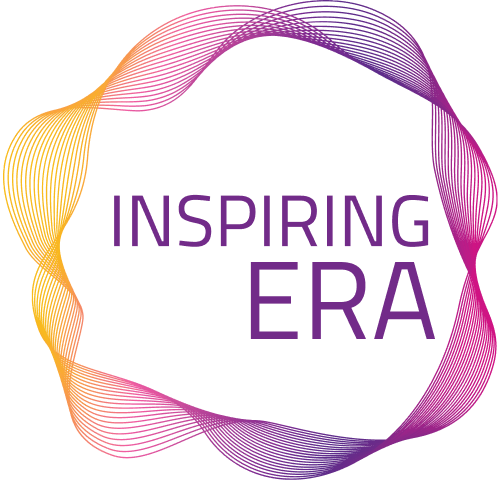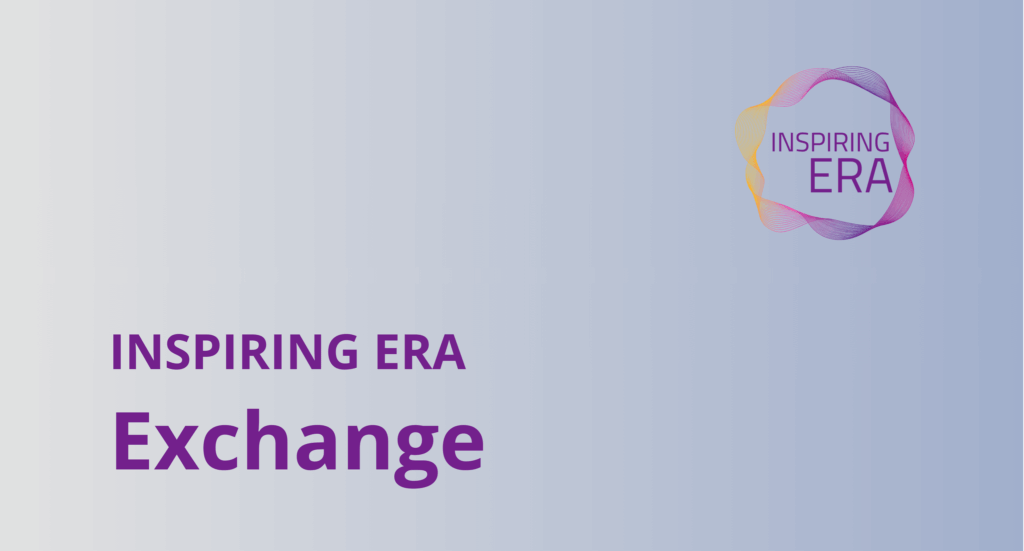Turning Data into Equality. How Europe Can Strengthen Inclusive and Intersectional Gender Policies in Research: Insights from the ERA Exchange
Brussels, 6 June 2025 – How can Europe build a research and innovation system that is both inclusive and evidence-based?
This was the guiding question of the INSPIRING ERA Exchange on ERA Action 5: Promote Gender Equality and Foster Inclusiveness, held in Brussels and online on 6 June 2025.
Organised by the INSPIRING ERA consortium together with the European Commission, the event brought together over 50 experts—policy advisors, equality officers, researchers, and project leaders—to tackle one of the ERA’s most persistent challenges: the lack of robust, comparable data on intersectional gender equality across Europe’s research and innovation systems.
Setting the Scene
The discussion opened with Maciej Woszczyk and Iwona Klich-Królikowska from the National Centre for Research and Development (NCBR), who outlined the goals of the INSPIRING ERA project and its Exchange format — creating spaces for policy learning and dialogue across Europe.
Three keynote speakers then set the stage for a thought-provoking debate.
Jörg Müller (Universitat Oberta de Catalunya, project INSPIRE) invited participants to look beyond categories and focus on the structural roots of inequality. “We talk about gender, race, disability, or class,” he said, “but what ties them together is how power and privilege are organised — often around masculinity.” Data collection, he argued, must capture these hierarchies of privilege rather than treating intersectionality as merely additive.
Anne Laure Humbert (University of Gothenburg, project GenderSAFE) presented a quantitative breakthrough: the MAIHDA (Multilevel Analysis of Individual Heterogeneity and Discriminatory Accuracy) model. Using data from UniSAFE, which surveyed more than 42,000 respondents in 15 countries, she demonstrated how this advanced method can reveal hidden patterns of vulnerability and structural inequality — for instance, how gender and career stage interact to shape exposure to harassment or bias. “Intersectionality is not just theory; it can be measured and modelled,” Humbert emphasised.
Representing the European Commission’s DG JUST, Anu Ritz addressed a frequent obstacle in equality data collection — concerns over the General Data Protection Regulation (GDPR). She clarified that data protection rules do not prohibit equality data collection; they enable it under clear ethical and legal safeguards. “With purpose, transparency, and anonymisation,” Ritz stressed, “it is both lawful and necessary to collect sensitive data that can guide fairer policies.”
Challenges on the Ground
Across breakout discussions, participants from across Europe identified a set of interconnected challenges that continue to impede progress:
- Small sample sizes and anonymity risks
In smaller institutions or teams, even basic demographic data can unintentionally identify individuals, especially when combined with job titles or departments. This discourages data collection or limits its usefulness. - GDPR confusion and risk aversion
Many organisations interpret data protection rules too restrictively or use them as a reason not to act. The lack of accessible legal guidance fuels paralysis, particularly in under-resourced regions. - Fragmentation and missing intersectionality
National datasets often exclude variables on ethnicity, disability, or sexual orientation, while university systems rarely integrate gender with other social dimensions. As a result, intersectional insights are missing — particularly in smaller or less-funded research systems. - Cultural resistance and limited institutional buy-in
Even where data exist, they often fail to drive change. Gender equality efforts are sometimes perceived as “soft” or secondary to excellence, especially in male-dominated or hierarchical fields. - Underrepresentation and mistrust
Low response rates in surveys—especially among minority or marginalised groups—reflect both survey fatigue and scepticism about how data will be used.
“People need to see themselves in the data,” one participant noted, “and believe that it will lead to action, not tokenism.” - Uneven capacity and regional disparities
Institutions in Southeast Europe and smaller research centres frequently lack the resources or expertise to collect and analyse data systematically. This leads to gaps that skew the European picture.
Pathways Forward
Despite these obstacles, the Exchange surfaced a series of concrete, actionable solutions:
- Clarify and communicate GDPR allowances
The European Commission should provide clear guidance and templates showing how equality data collection can comply with GDPR — turning uncertainty into empowerment. - Embed intersectionality in all Gender Equality Plans (GEPs)
Institutions should integrate multiple dimensions of identity (gender, ethnicity, disability, etc.) into their monitoring systems, supported by training and common EU-wide indicators. - Strengthen national frameworks and benchmarking
Countries like Ireland are setting examples with systematic models such as ATHENA Swan — combining peer review, five-year equality plans, and national benchmarking. Such approaches could inspire replication elsewhere. - Support under-resourced regions
EU and national funders should invest in capacity-building for data collection and analysis, especially in regions with limited institutional infrastructure. - Enable innovative and flexible approaches
Voluntary surveys, anonymised grading systems, and proxy data (e.g. parents’ country of origin) can generate insight where direct demographic data are restricted. - Link data to action
Data collection must be followed by accountability mechanisms, targeted funding, and cultural change initiatives. As several participants noted, “Data alone doesn’t change systems—people do.” - Foster regional and cross-sector collaboration
Examples like Catalonia’s inter-university network on gender-based violence show how shared definitions and reporting grids can improve consistency and learning across institutions.
Why It Matters
The Exchange reaffirmed that equality data is not just a bureaucratic requirement — it is the foundation of fair and effective research policy. Without it, inequalities remain invisible; with it, institutions can design interventions that genuinely shift cultures.
As one participant concluded:
“Intersectional data is not a luxury—it’s essential to understanding how power operates in science and who gets to thrive within it.”
By advancing ERA Action 5, the INSPIRING ERA project is helping translate Europe’s gender equality ambitions into measurable, comparable, and actionable progress — ensuring that the European Research Area evolves into a space where diversity is not only recognised but structurally supported.


